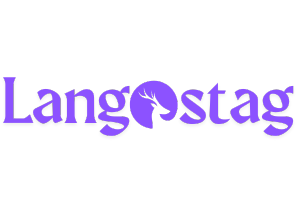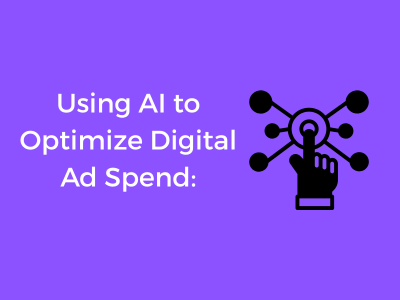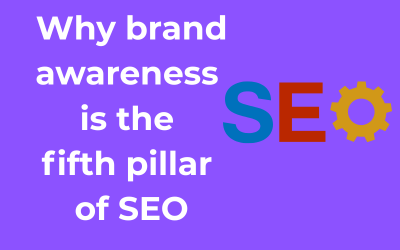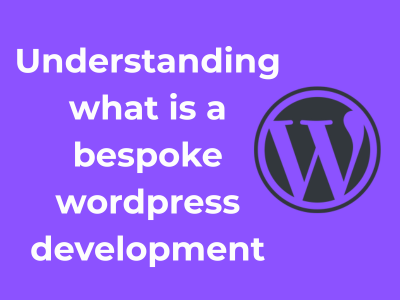Let’s face it—running digital ad campaigns can feel a bit like tossing money into the wind and hoping it lands somewhere useful. You carefully set your budget and design a killer ad, only to find yourself scratching your head when the results don’t match your expectations. Trust us, you’re not alone.
So, why does this happen? It often boils down to one big problem: *inefficiencies* in how budgets are allocated and managed. Many businesses, big and small, struggle to accurately identify where their ad spend goes wastefully. Whether it’s targeting the wrong audience, overpaying for low-performing ads, or simply failing to measure campaign results effectively, there’s a lot that can drain those precious marketing dollars.

Common Sources of Ad Budget Waste
Let’s break this down and look at where things most often go awry. Here are some classic culprits:
- Broad Targeting: Throwing the net too wide means your ads reach a lot of people, but many won’t care—or worse, they aren’t your buyers.
- Low-Quality Clicks: Not all clicks are created equal. If you’re paying for clicks from bots or uninterested users, well, goodbye budget.
- Outdated Strategies: The digital ad world moves fast. Using yesterday’s tactics in today’s environment is a surefire way to fall behind your competitors.
- Overlooking Tracking: Without properly monitoring performance metrics, it’s almost impossible to pinpoint what’s working—or what’s wasting your money.
Why Identifying Waste Is Crucial
Now, here’s the kicker: If you can identify waste effectively, you’re not just saving money—you’re also rechanneling those resources into places where they’ll actually generate returns. Think of it like this: every dollar saved is a dollar you can potentially reinvest into well-targeted ads, stronger creative content, or testing innovative approaches that deliver actual value.
Beyond saving money, optimizing your spend also sharpens your understanding of your campaign’s performance. When you iron out inefficiencies, you start to see clear trends and patterns that—guess what—can also inform your wider marketing strategy. It’s like tidying up a cluttered room: once things are in order, you can see what you really need.
Pro Tips for Getting Started
If you’re ready to kick wasteful spending to the curb, here are a few steps to get you started:
- Audit Your Campaigns Regularly: Put aside time each week or month to audit your spending. Which ads worked? Which didn’t? Don’t be afraid to pull the plug on low performers.
- Leverage Analytics Tools: Use tools like Google Analytics, Facebook Ads Manager, or even third-party platforms to monitor key performance indicators (KPIs). These will help you decode what’s driving results.
- Refine Your Audience: Take a hard look at who you’re targeting. Are you focusing on your ideal customer, or casting too wide a net?
- Experiment with A/B Testing: Don’t put all your eggs in one basket. Experiment with variations of your ads to identify what resonates with your audience.
How Does AI Refine Audience Targeting in Real-Time?
Gone are the days of spray-and-pray advertising, where marketers would blanket an audience and hope for the best. In today’s fast-paced digital world, real-time audience targeting is the gold standard, and Artificial Intelligence (AI) is the alchemist transforming raw data into marketing gold. But how does AI actually make this magic happen? Let’s dive in and talk tech—but in plain English, promise!
The Anatomy of Real-Time Refinement
Imagine crafting an ad for dog lovers and accidentally showing it to a cat enthusiast. Oops, right? This is where AI swoops in like a superhero. Using advanced algorithms and a keen ability to learn from real-time data, AI identifies the right audience for your ad instantly. Smart targeting isn’t just about narrowing the audience; it’s about refining and reshaping it as your campaign unfolds. Yes, it’s that dynamic!
- Data Collection on the Fly: AI doesn’t sit idle. It collects data—and lots of it—from sources like user behavior, browsing patterns, and even time of day. This information is used to identify which audience segments are engaging more with your campaign.
- Behavioral Adjustment: The magic of AI lies in learning patterns. When real-time data shows that certain demographics are converting more often than others, the system pivots to prioritize those groups. No guesswork, just cold, hard evidence.
- No Two Campaigns Are the Same: Unlike old-school targeting templates, AI treats each campaign uniquely. Whether it’s a back-to-school sale or a last-minute holiday promo, adjustments are made to match the context of each moment.
Why Real-Time Matters
Now, you might be thinking, “Isn’t this just a fancy way to say targeting is faster?”—but it’s more than that. Real-time adjustments can be the difference between wasted dollars and a winning campaign. Consider this:
“Real-time AI optimizations mean that your ad spend is directed at the people most likely to engage at the moment they’re ready to engage.”
For example, AI can recognize that your target audience is more active after 6 PM and modify delivery times without any human intervention. Meanwhile, campaigns that are underperforming can be pulled back before hemorrhaging your budget. Would manual efforts match that speed? Probably not.
Case in Point: Personalized Recommendations
Ever wondered how Netflix knows exactly what show to recommend next? Or how Spotify serves up your perfect playlist? It’s the same AI principles at work. Applying this logic to ads, AI ensures the right people see your banner or video—whether it’s based on geography, habits, or personal preferences. What you’re left with is highly personalized advertising that feels less invasive and more conversational, like a friend recommending a product.
Your Role in the AI Revolution
Before you hang up your marketer hat and let AI run wild, remember—you’re still the director of this show. While AI provides incredible insights and automates grueling processes, it requires knowledgeable humans to set goals, interpret data, and maintain the right tone for messaging. Think of AI as your trusty assistant, not the boss.
Ad Spend and Machine Learning: A Match Made for Precision
Let’s face it – managing digital ad budgets can feel like trying to pour water into a tiny cup without spilling. You invest time and money hoping to hit the bullseye: the right audience, the right time, the right message. But too often, you end up with wasted spend, targeting an audience that barely glances your way. Enter Machine Learning, the superhero of modern advertising. Here, we’re breaking down why machine learning and ad spend are the perfect power couple.
Why Machine Learning is Perfect for Ad Precision
Think of Machine Learning (ML) as the brainiac in your ad strategy. It thrives on data, and its ability to analyze massive datasets in real-time is unparalleled. When it comes to digital ads, ML is the ultimate problem-solver. It processes behaviors, demographics, time zones, and even those pesky little details like which ad design appeals to which segment. While humans might take hours—or days—analyzing this data, ML systems crunch through it in seconds. Impressive, right?
Making Every Dollar Count
So, how does ML transform your dollars into results? Here’s the scoop:
- Pinpoints High-Performing Audiences: By analyzing past data and ongoing trends, ML identifies the segments most likely to engage or convert. Imagine no longer wasting money on outlier groups that won’t even click!
- Optimal Ad Placements: Ever wondered why some ad slots are goldmines while others seem like black holes? Machine learning algorithms predict which platforms, devices, or times will maximize visibility and engagement.
- Continuous Learning: Unlike static methods, ML doesn’t just stop once an ad is out there. It evolves. As campaigns unfold, ML continues to refine its tactics, ensuring you’re always a step ahead.
Predicting Campaign Outcomes with Machine Learning
Now imagine this: launching a campaign with a crystal ball. Okay—it’s not actual magic, but ML comes close. With predictive modeling, it estimates the click-through rate (CTR), conversion potential, and even return on ad spend (ROAS) before you hit “go”. This means advertisers can tweak variables and budgets in advance to boost performance. The icing on the cake? ML can also warn against ineffective strategies. It’s like having a super-smart co-pilot.
How to Get Started with ML in Your Advertising
Feeling inspired to bring ML into your strategy? Here’s where to start:
- Invest in the Right Tools: Platforms like Google Ads and Facebook Ads Manager are already equipped with machine learning features. There are also specialized third-party tools designed to supercharge results.
- Feed the Machine: Machine learning thrives on high-quality data. Pay attention to the analytics you gather across campaigns—more data equals smarter AI insights.
- Test and Iterate: Don’t shy away from experimentation. Launch campaigns to test ML-driven targeting versus traditional methods and refine your approach along the way.
A Win-Win for Marketers
When you harness the power of machine learning for ad spend optimization, everybody wins. You, the advertiser, get efficient targeting and reduced waste. Meanwhile, the end user benefits from personalized, relevant ads instead of irrelevant ones clogging their feed. In the end, it’s not about spamming an audience but understanding them in ways that would otherwise be impossible without AI.
LangStag’s Secret Sauce: What Sets Their Method Apart
When it comes to optimizing digital ad spend, everyone seems to be hopping on the AI bandwagon these days. But what makes LangStag’s approach to smart targeting truly stand out? Let’s pull back the curtain and explore the “secret sauce” that sets their method apart from the rest of the pack. Spoiler alert: it’s equal parts cutting-edge technology and sharp human insight!
1. A Multi-Layered AI Model That Understands Context
LangStag doesn’t settle for cookie-cutter AI models. Their approach is all about creating a multi-layered AI system that focuses on interpreting data in detailed, rich context. For instance, instead of just targeting a fitness enthusiast as a category, their AI digs deeper to refine who that really is. Are they someone training for marathons? Interested in home workouts? Or just dipping their toes into a new year’s resolution? By interpreting behavior, purchase habits, and even search intent, LangStag’s AI paints the complete picture.
Why does this matter? Let me put it like this: if your ads are showing sneakers to someone who strictly does yoga, that’s wasted money. LangStag’s data-driven approach ensures that your ads find their way to the right *sub-niche* within your audience, yielding much higher engagement rates.
2. A Perfect Marriage of AI AND Human Input
Unlike some companies that fully automate their ad campaigns and walk away, LangStag takes a hybrid approach. Here’s the secret: they know that AI is incredible for crunching data but humans are still pros when it comes to intuitive creativity and understanding cultural nuances. Instead of relying completely on artificial intelligence, LangStag’s strategy involves expert marketers working in tandem with their AI tools.
For example, imagine running an ad campaign during a major global event like a World Cup or a blockbuster movie release. LangStag’s AI might identify spikes in traffic that align with these trends, but only a human mind can tie those opportunities to a clever, emotionally resonant ad pitch.
3. Dynamic Adjustments for Maximum ROI
Ever feel like many ad platforms operate on a “set it and forget it” model? Not here! LangStag’s secret sauce also includes dynamic campaign optimization in *real-time*. They use AI to track each campaign’s results as they happen and adjust bidding, targeting, or content parameters to maximize returns. Think of it like having a personal assistant who’s constantly tweaking your strategy behind the scenes to make sure you’re getting the best possible deal.
The payoff? You no longer waste your budget on underperforming strategies. LangStag’s system efficiently reallocates resources so you get great results without needing to micromanage campaign performance.
4. Prioritizing Ethical Data Usage
Let’s not ignore the elephant in the room: consumer privacy concerns. LangStag sets itself apart by taking a firm stand on ethical data collection. Their AI doesn’t just focus on performance, but also ensures that campaigns comply with all the latest privacy regulations, like GDPR or CCPA. They use anonymized data creatively and responsibly, ensuring your brand builds trust with its audience rather than eroding it.
5. Tailored Strategies, Not One-Size-Fits-All
Every business is unique, and LangStag knows it. Their AI isn’t about force-fitting your brand into a mold. Instead, their system uses predictive analytics to design ad strategies tailor-made for your goals—whether it’s boosting conversions, increasing awareness, or driving repeat purchases.
This level of customization means no two campaigns LangStag oversees will look the same. It’s like having a bespoke outfit made versus picking something off the rack. Which would you rather have?
From Clicks to Conversions: Understanding Campaign Metrics
Let’s talk about those campaign metrics that everyone loves to throw around—impressions, clicks, conversions, ROAS (return on ad spend)… Sound familiar? If they still feel a little mysterious, don’t worry. You’re not alone! These metrics are like pieces of a puzzle, helping you figure out whether your ad campaigns are achieving their goals. The key? Making sense of them in a way that drives actionable decisions.
Why Metrics Matter (It’s Not Just About Clicks!)
At first glance, you might be tempted to measure the success of your advertising campaign by the number of clicks it generates. And while clicks are important, they’re just one piece of the story. The real gold lies further down the funnel—when clicks turn into actual conversions. Conversions could mean different things depending on your business: a purchase, an email signup, or even just time spent engaging with your content.
Here’s the thing: a high click-through rate (CTR) might look great on paper, but if it doesn’t lead to meaningful action (like purchases), is it really worth celebrating? That’s why understanding the whole spectrum of campaign metrics is essential.
The Metrics That Matter Most
So, where do you start? Let’s break down a few key metrics that can help you make sense of your ad campaign’s performance.
- CTR (Click-Through Rate): This shows the percentage of people who clicked on your ad after seeing it. It’s a good indicator of how well your ad is capturing attention.
- Conversion Rate: This tells you what percentage of ad clicks are turning into measurable actions, such as sales or signups. It’s often the most telling metric for campaign success.
- Cost Per Conversion: This metric compares your ad spend to the number of conversions generated. It helps you understand how much you’re spending to achieve your desired outcomes. Lower is better, of course!
- ROAS (Return On Ad Spend): One of the ultimate measures for gauging effectiveness. If you spend $1 on an ad and make $3 back in revenue, your ROAS is 3:1. It’s a simple but powerful indicator of profitability.
Connecting Metrics to Real Goals
Metrics are only as useful as their connection to your actual business goals. Are you looking to grow brand awareness? Then, impressions and CTR might matter more early on. On the other hand, if you’re trying to directly boost sales, you’ll want to focus heavily on conversion rates and ROAS. Aligning your metrics with clear goals ensures you’re not distracted by vanity metrics—those numbers that look good but don’t make a real impact.
Can Automation Make Human Input Irrelevant?
It’s a hot topic, isn’t it? As Artificial Intelligence (AI) continues to dazzle us with its high-performance abilities, a lingering question hangs in the air: Are humans being phased out of the advertising equation? It’s an exciting—and maybe a little nerve-wracking—thought! But before trying to weigh in on that, let’s unpack how automation and human creativity can coexist harmoniously.
The Power of Automation: Efficiency at Its Best
We can’t deny that automation has completely changed the ad game. With AI, repetitive tasks that once took hours to accomplish can now be completed in seconds. Take scheduling ads, testing multiple creative variations, or even bidding for ad placements. These highly technical, time-consuming processes now spin smoothly in the automated world:
- Real-Time Adjustments: AI algorithms analyze user behavior and instantly adapt ad spending and targeting based on performance metrics.
- Smarter Budget Allocation: Instead of guessing which channel deserves a bigger slice of your budget, AI crunches the data to make precision-driven decisions.
- Less Human Error: Automation reduces the possibility of miscalculations or oversights, ensuring campaigns stick closer to the mark.
Sounds magical, right? But here’s a critical caveat: as powerful as automation is, it’s not entirely self-sufficient. The human touch still adds layers of value that no machine can replicate.
Where Humans Prove Indispensable
While AI is trained to optimize campaign mechanics, it still relies heavily on humans for crucial elements it can’t—well, “human.” For instance:
- Creative Problem-Solving: Machines are great at analyzing data trends, but humans create the compelling stories and concepts that emotionally connect with audiences.
- Strategic Decisions: A machine might pinpoint which audience segment is most profitable, but it requires human strategy to position the brand in a way that resonates long-term.
- Ethical Oversight: AI doesn’t have empathy. Humans must still monitor campaigns to ensure that messaging aligns with ethical guidelines and doesn’t alienate or mislead audiences.
In simple terms, human creativity and emotional intelligence push advertising past being just a numbers game. AI and automation help us execute ideas, but humans remain the architects of those ideas.
Blended Teams: The Winning Formula
The future of ad campaigns isn’t about replacing people with machines. It’s about teaming up! Advertisers and creatives who leverage AI to enhance rather than replace their work will lead the charge. Imagine this as a symbiotic relationship between efficiency and inspiration, a true dynamic duo for digital success.
Here’s some advice if you’re thinking about balancing automation with human input:
- Focus on using AI where it’s best—data crunching, scaling efforts, and offering insights.
- Let human creativity shine when it comes to shaping brand stories, goals, and authentic messaging.
- Always analyze results, question assumptions, and be willing to tweak the plan if an automated output doesn’t feel “right.”
Human and Machine: Better Together
Automation isn’t here to wipe us off the playing field. No, it’s here to elevate the game entirely. And while it’s true that AI can streamline processes and help avoid costly mistakes, it still requires a guiding hand—your guiding hand!
So, the answer to the question “Can automation make human input irrelevant?” is a big, friendly nope! With you as the visionary and automation there to bring the vision to life, the future of digital advertising looks brighter than ever.
Future Trends Shaping AI-Driven Ad Planning
Ready to daydream about the future? Let’s talk about where artificial intelligence (AI) is taking us in the crazy, fast-moving world of digital ad planning. With AI already transforming the way ad budgets are optimized and audiences are targeted, it’s exciting to imagine what the next big evolutions could look like.
1. Personalization That Feels Human
We’re moving toward an era where ads won’t just match interests—they’ll anticipate needs in the most natural, human-like way. Thanks to advancements in deep learning and natural language processing (NLP), the AI of tomorrow could develop hyper-personalized messaging that feels like the product or service was made just for you. While “personalization” is already a buzzword, imagine seeing ad creatives that shift dynamically based on a user’s mood, location, or even real-time online behavior. It’s like ad campaigns have gone from painting with broad strokes to creating intricate masterpieces, one user at a time.
2. Predictive Analytics Will Get Smarter
Predictive analytics are already helping marketers figure out which campaigns might pay off, but in the future? It’s about going beyond just “educated guesses.” AI will soon become model-driven to the nth degree, tapping into multiple data streams—everything from browsing history to purchase timing patterns—to foresee not only interests but the exact moments users are primed to convert. Campaigns won’t just perform well because of audience insights, but because they’ll be launched at optimal times as predicted by AI. Say goodbye to wasted impressions!
3. Voice Search and Smart Assistants: The New Frontier
As devices like Alexa, Google Assistant, and Siri remain household staples (or even evolve further), voice search is shaking up the digital ad game. Imagine a world where AI optimizes ads specifically for voice search algorithms, ensuring your brand message is seamlessly woven into those “What’s the best [product] near me?” queries. These text-free searches are going to demand a whole new strategy—and AI is the wingman every advertiser will need.
4. Smarter Budget Allocation with AI-Based Forecasting
Another future trend? AI taking over the highly manual (and sometimes tedious) task of budget allocation. By analyzing historical data, AI will be able to predict exactly where every dollar should go to score the highest ROI for your campaigns. Want to split that $5,000 ad budget across Facebook, Google, TikTok, and Instagram? AI could distribute it intelligently, ensuring no penny goes to waste. It’s efficiency on steroids.
5. AI-Driven Creative Design
It’s not just media planners leveraging AI’s power—creative teams are jumping on board, too. Futuristic AI systems may be designing ad visuals, crafting compelling headlines, and even testing audiences’ emotional responses to various creative variations. Imagine having campaigns created on-demand, uniquely tailored for demographics, platforms, and performance goals, all within seconds.
Feeling Behind? Don’t Worry.
If all these trends feel far off, don’t sweat it. AI evolves quickly, but remember: every big leap starts with small, accessible steps. Whether you’re running your first AI-driven campaign or already using tools like programmatic buying and predictive analytics, staying curious and adapting as technologies emerge is the smartest move you can make.











